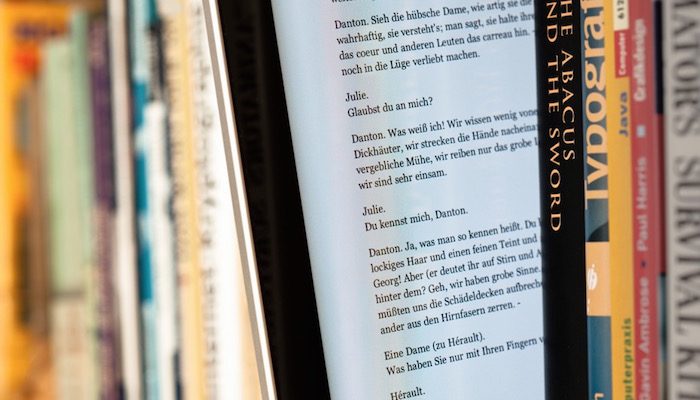
Over the weekend I published my first eBook for the Amazon Kindle. It’s a relatively short read at just 80 printed pages and aimed at a pretty narrow audience as it is specifically tailored for freshman students at my own institution, CEFAM. Yet I’m still excited about having taken the step into purely digital publishing and for the opportunities that eBooks provide for academics.
At E-IR, of course, the editorial team are no strangers to eBook publication. The site has brought together some wonderful authors in recent years producing some must-read volumes. My favourite take on the Arab Spring, at least from a readable, academic perspective, remains the E-IR eBook, The Arab Spring of Discontent. Alasdair McKay did a fine job of coordinating that publication, and the E-IR eBook library now runs almost a dozen titles.
Further afield, other academics within and without of the discipline are beginning to experiment with the eBook platform, too. Writing at The Conversation, Professor Dorothy Bishop of Oxford University foresees the eBook model – and the Kindle Direct Publishing outlet in particular – as a valuable means of promoting new research and avoiding traditional publishing gatekeepers. She writes
The Kindle operation is designed for publishing books. To publish, one does not have to pay anything and can set one’s own price and get a 70 per cent royalty. You download software to convert your manuscript into the right format and then you press a button and upload. The whole process takes about the same amount of time than it typically takes to submit a journal article through an electronic portal. And you don’t need a Kindle to do it.
Couldn’t research papers adopt this model, but with even lower charges? The difference from current practice is that the material would be affordable; instead of costing 20 to 30 dollars, individual articles would be priced at 20 to 30 cents. Authors of academic articles don’t expect royalties, so these could be waived.
Bishop is correct on the speed of publication, and also on the ease of disseminating the research through Amazon. A typical journal article in the social sciences of perhaps 5000 to 8000 words could easily be published as an eBook for Kindle, priced at 99 cents, and distributed worldwide to an audience that is interested, willing to pay, and eager for timely research.
One academic who has experimented with the eBook model on Amazon is the Australian National University’s Inger Mewburn. Her eBook How to Tame Your PhD was published in 2012 on the back of her successful blog, The Thesis Whisperer. After eight months of sales she reported to readers that she’d sell a couple of eBooks per day and had earned some $1000 in royalties – not enough to retire on, but a nice “skunkworks” payday, as she put it.
Mewburn notes that, for the present, these self-published eBooks aren’t going to help a professor earn tenure or advance their careers, but holds out hope that things could change
Self published efforts don’t ‘count’ in most research metrics… at the moment. Who knows what the future holds? There are fashions in research metrics and you can go mad – or lose your soul – trying to conform to them. I would rather focus on doing good, useful work and sharing it with as many people as possible. Self publishing takes time, but you can reach more people than you can with a journal paper if you play it right. As a profile raising exercise alone I think it’s worth the effort. In any case, the income might soften the blow if your efforts are not counted in the next ERA or REF collection.
I tend to agree. There’s certainly little chance that my short missive on academic skills, organizing a study schedule, and dealing with professors at CEFAM is going to win me any research grants, and the labor laws here in France mean I am effectively tenured already, anyway.
Yet I think it is a useful route to explore at the same time for academics with something to say and someone to say it to, but without either the audience size or time to wait that traditional publishers demand.
Consider: the current CEFAM freshman class numbers around 60 students – what publisher is going to invest time and money producing a book that maybe only a few dozen students will purchase at best? Even if they did, the process of publishing a manuscript is long, involved, and it’s likely that moving from concept to paperback would mean students who are now freshman would be sophomores or even staring down their junior year before the book came was even released.
There can be real value in getting work like this published and into the hands of my students quickly via the eBook publishing model. Similarly, there is great value to be found in disseminating research via eBook so that – at low cost and high speed – interested researchers can access high quality work products without the long delays and high cost that traditional journal publishers enforce.
For these reasons, then, academics should consider eBooks as a viable alternative publishing medium. They don’t yet (and might never) have the quality control mechanisms that peer-reviewed journals enjoy, nor will they have the cachet that universities demand and that ratings agencies consider central to rankings. Yet they do have a place in the academic’s toolbox, and it’s an area I think will only grow in years to come.
Further Reading on E-International Relations
- Publishing from the PhD: Reflections on My First Experience of Peer Review
- Small Grants from Great Powers: Academic Integrity vs. Information Warfare
- Teaching and Publishing in Cambridge and Moscow
- Reflecting on the Limitations of Academic Freedom
- Academic Orientalism in Russia-Ukraine Scholarship
- Plotting the Future of Popular Geopolitics: An Introduction